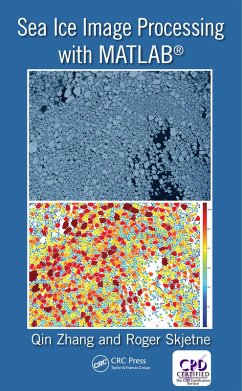The ice concentration data on a global scale are available on a daily basis due to microwave satellite sensors. Image processing for sea ice is vital to estimate the sea ice properties and understand the behavior of sea ice especially on a relatively small scale. Currently, sea ice concentration is estimated from lower-resolution passive microwave sensors. This book aims to present the most recent image processing techniques including the so-called gradient vector flow snake algorithm to identify individual ice floes from the ice images. It makes an extensive use of this powerful technique to extract or estimate the sea-ice parameters and to develop tools useful to scientists and engineers.
Dieser Download kann aus rechtlichen Gründen nur mit Rechnungsadresse in A, B, BG, CY, CZ, D, DK, EW, E, FIN, F, GR, HR, H, IRL, I, LT, L, LR, M, NL, PL, P, R, S, SLO, SK ausgeliefert werden.


